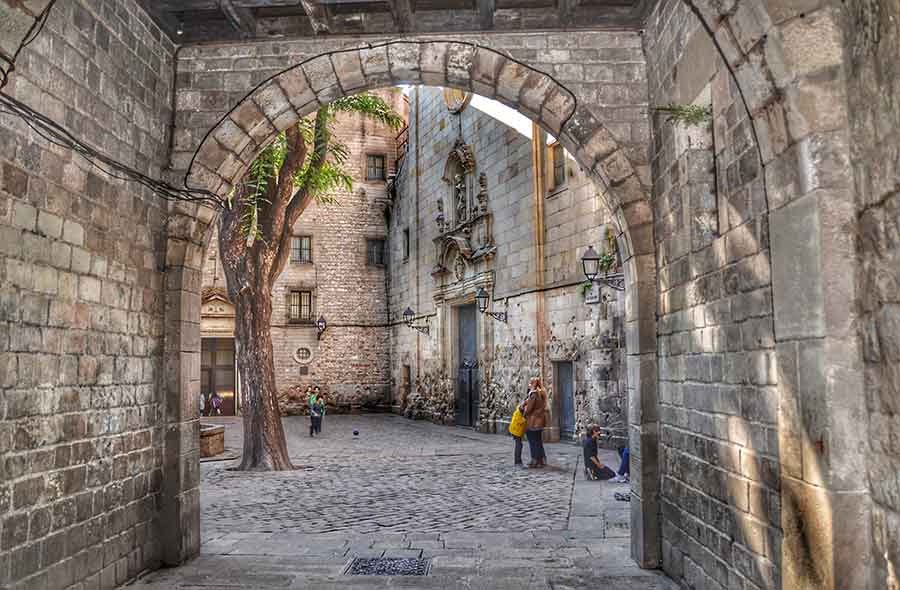The Barcelona Haggadah
One of the finest illuminated Hebrew manuscripts in The British Library, it dates from about 1340, and is named after the city of Barcelona whose heraldic shield it bears.
When the manuscript was created, the Jews of Aragon and Catalonia formed one of the largest communities in Europe, and Barcelona was home to a flourishing centre of manuscript illumination, linked to the Court and influenced by Italian and French styles.
The Barcelona Haggadah is outstanding for the rich decorative and representational illustrations: 128 of its 322 pages are ornamented with fanciful figures and pictorial scenes providing fascinating insights into Jewish life in mediaeval Spain. Music and the arts flourished in the Jewish community in Barcelona and Jewish musicians played a vital role in drawing the Jews and Christians closer together. In the manuscript, twenty-eight different instruments appear in the illustrations. More intimate details, such as depictions of the meal, take us straight into a Jewish home of the period, while the synagogue scene reflects fourteenth-century conditions and traditions.1
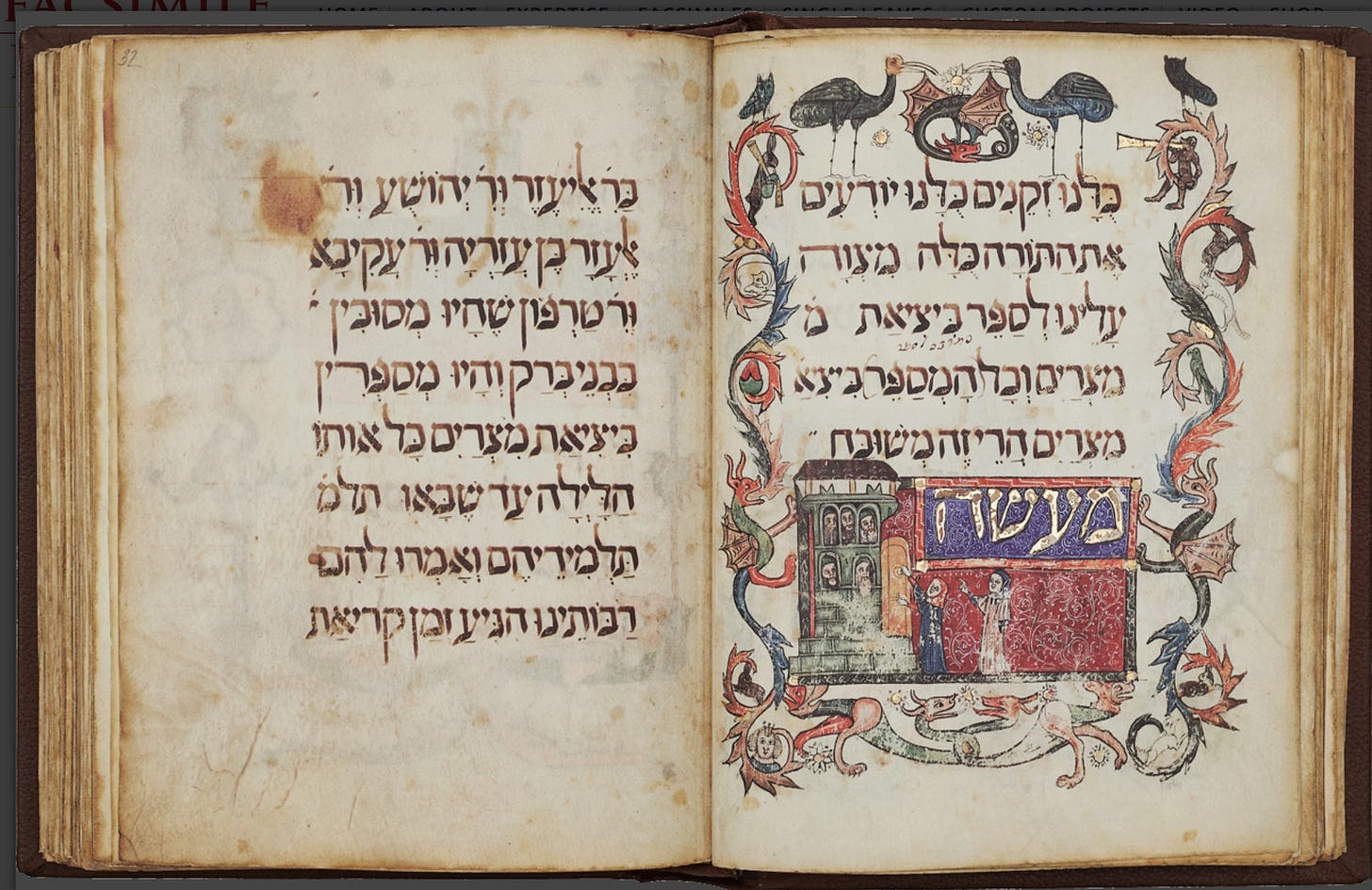
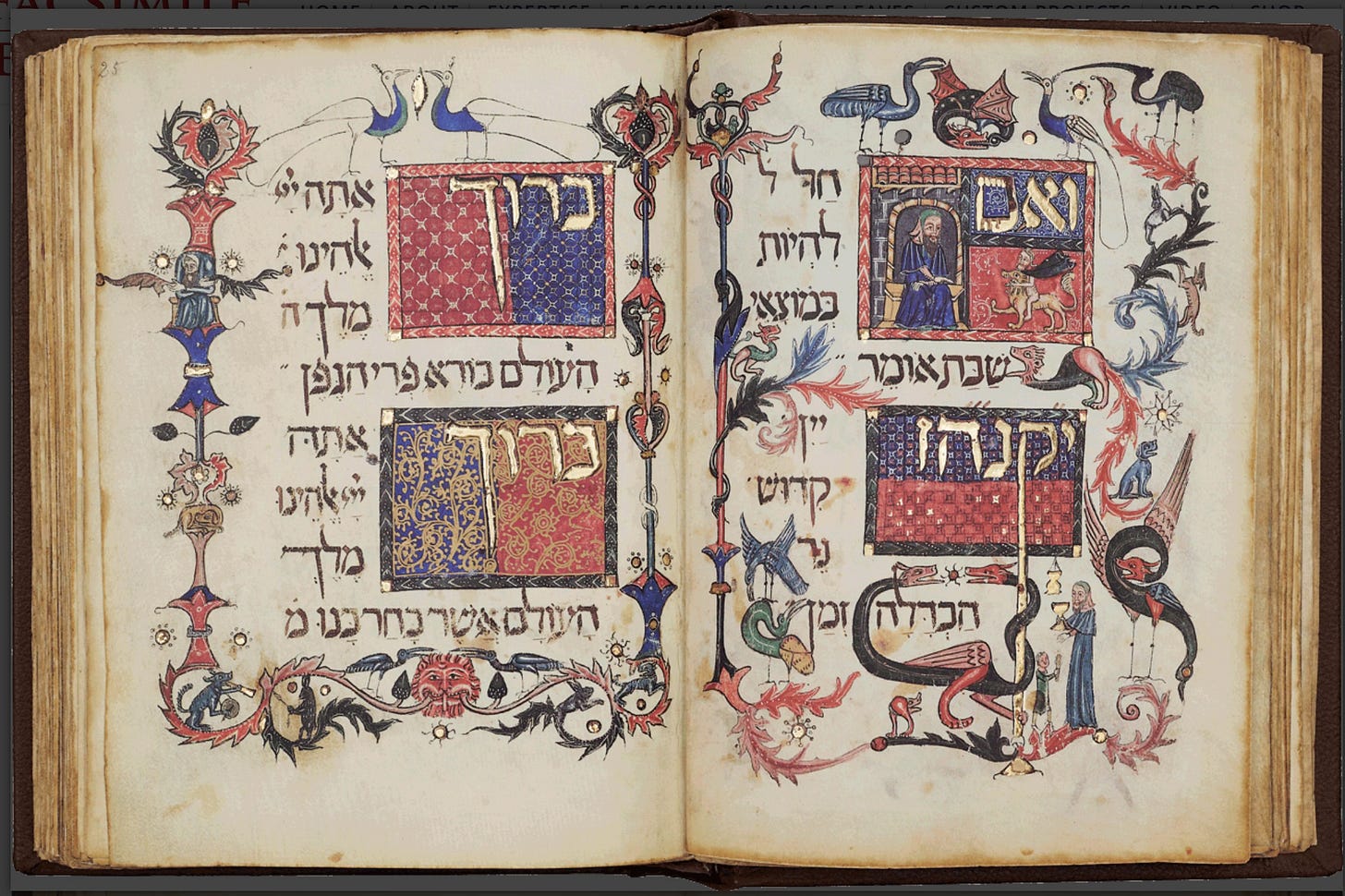
The large, clear script designed to be read easily by children and by candlelight, is populated with zoomorphic figures in improbable situations highlighting the sense of light-heartedness and freedom associated with Passover. The text of the Haggadah occupies 180 pages; the remaining leaves contain liturgical poems and prayers for the Passover festival listed below.
A manuscript as splendid as this must always have been treasured by its owners. We know that it was sold by Shalom Latif of Jerusalem to Rabbi Moses ben Abraham of Bologna in 1459 for fifty gold ducats, and that it therefore left Spain before the expulsion of the Jews. The manuscript also bears the signature of an ecclesiastical censor: ‘Visto per me Fra. Luigi del Ordine de San Dominico 1599’ (Seen by me, Brother Luigi of the Order Saint Dominic 1599.)
Similarly, it was owned by Jehiel Nahman Foà in the seventeenth century and later by Mordecai and Raphael Hayyim, two members of the Ottolenghi family. The British Museum bought it in 1844. The auctioneer’s description is attached to the inside front cover of the manuscript and reads. “Agada, that is the Prayers used by the Jews at their Meals during Easter.”2

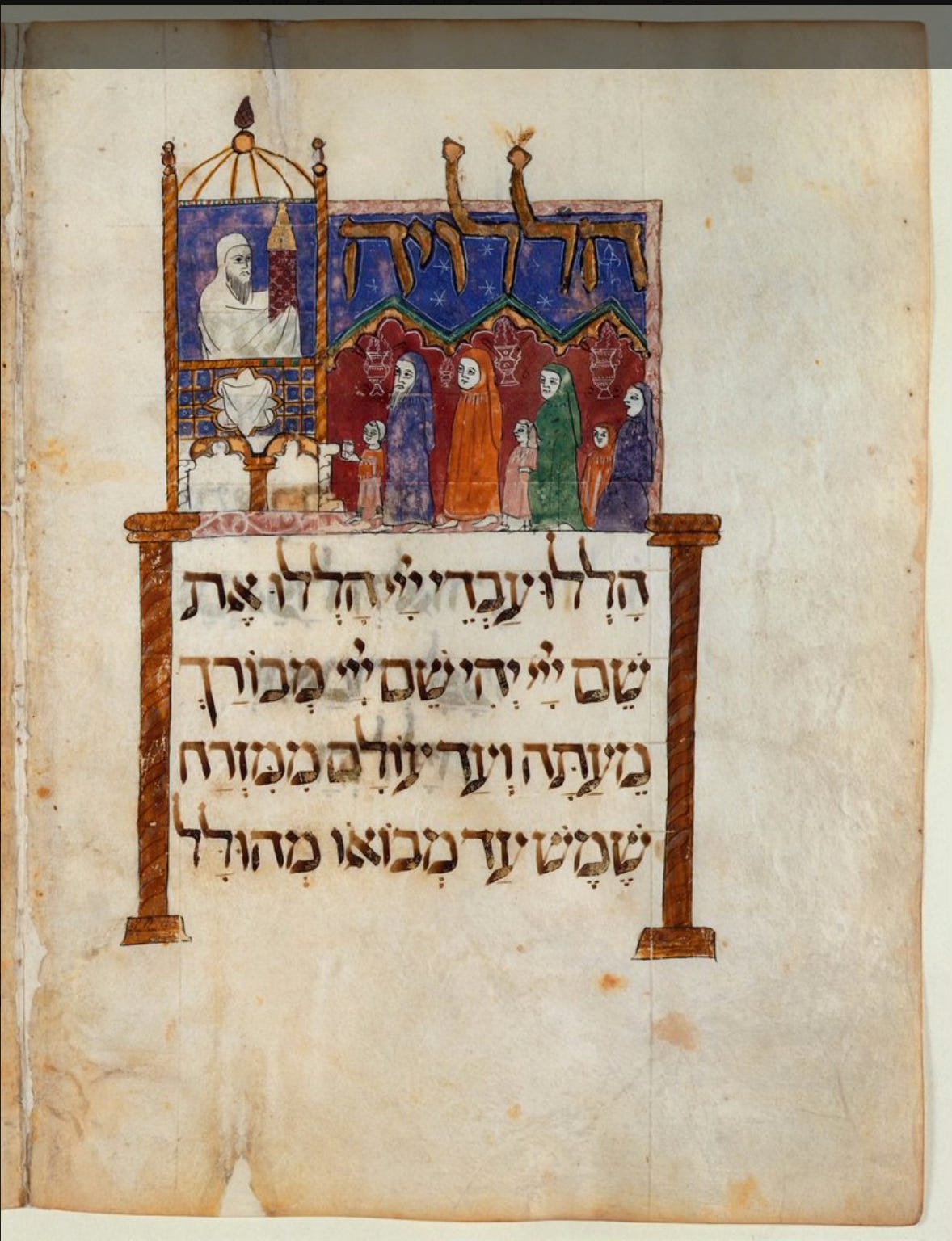
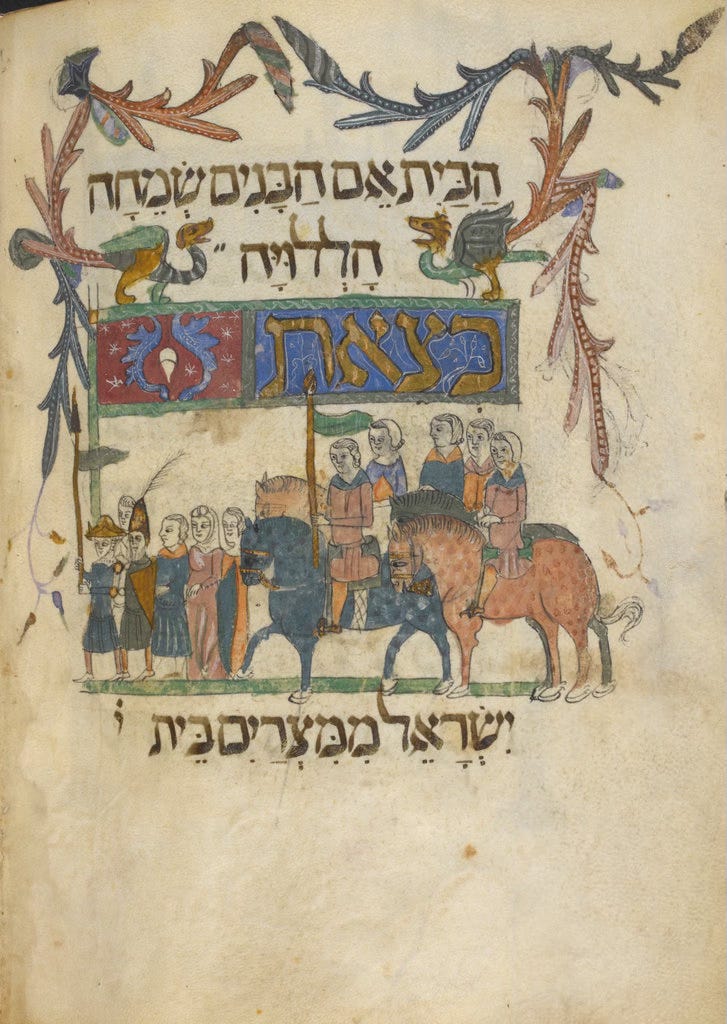
Thank you so much for being here, for reading and sharing my work.
If you enjoy,
click the ❤️ button
share it with someone else
leave a comment and/or
buy me a 🧁
Images and text from https://facsimile-editions.com/bh/
https://facsimile-editions.com/bh/




